- Working at KSC
- NASA Old Headquarters building on KSC destroyed.
- Flintknapping points
- Vampires of Kennedy Space Center and the O&C
- Demons of Kennedy Space Center
- Demons of Kennedy Space Center, corpus callosotomy
- Ghosts of Kennedy Space Center, End of Spiders
- Dreams of Kennedy Space Center, lovers and pyramids.
- Witches of Kennedy Space Center
- Cave Bears of Kennedy Space Center
- Aliens of Kennedy Space Center, uninvited guests
- Remembering Kennedy Space Center
- Lake 33 Killing Relic
Chester Shoals House of Refuge
for ship wrecked mariners.
The Cape before the space age
Disclaimer.......This is the stuff of addictions to me.
I think that Perhaps two or three people may be interested in the House of Refuge, but I find it fascinating even to point of finding the remains....
Chester Shoals House of Refuge (Rescue House) is now a series of overgrown mounds on the beach east of Launch Complex 39A on Kennedy Space Center.
Launch Pad 39A the historic landmark constructed for the Apollo moon missions and then retrofitted for the Space Shuttle program.
Currently Pad 39A has been loaned (given?) to the private company SpaceX to launch their Falcon Rockets.
Yet just outside of the Pad security fence on the Atlantic beach is a another less famous history.
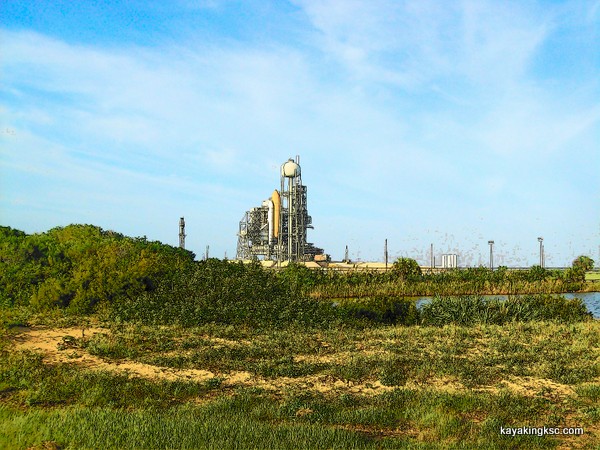
Space Shuttle on Pad 39A
Ruins of Chester Shoals rescue house in the front of the photo
Somehow the Chester Shoals rescue house ruins escaped the fate of the "Titusville Beach" Indian mound/midden and the Harvard gun club ruins-both shoved into the Florida swamp to create the two moon rocket launch pads.
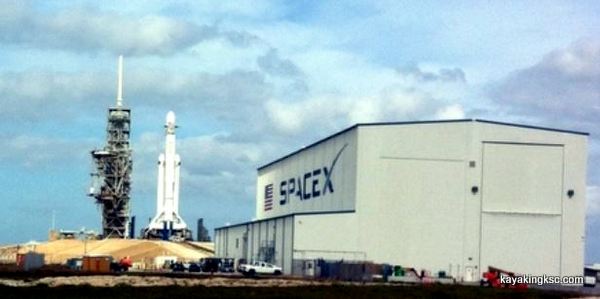
Falcon rocket on Pad 39A
Why the need for a House of Refuge at Cape Canaveral?
Off shore of Kennedy Space Center under the grey Atlantic Ocean a rock formation juts up from the ocean floor (The rocks are actually the remnants of an ancient ice age shoreline) today known as Chester Shoals.
This rocky reef and others around the cape create huge and unpredictable off-shore waves. These waves have caused countless shipwrecks on the shoreline of what today is known as Kennedy Space Center and Cape Canaveral Air Force station (CCAFS).
The earliest Spanish maps of the Florida coast mark the waves and shoal as the "Canaveral Bulls"
At first only Spanish slave raiders were wrecked upon the shoals of Cape Canaveral.
Then large parts of a French invasion army were wrecked upon the beaches & shoals of the moon launch pads.
The Jene Ribault archeology site north east of the launch pad marks the location where the desperate remnants of the French army cobbled together a useable ship from their wrecked fleet to escape both the inhospitable Florida beach and the approaching Spanish army.
Jean Ribault's flag ship discovered off of Cape Canaveral
Of course the castaway French had no "House of Refuge" on the cape and the cruel reception given by the Spanish army at Matanzas Inlet is stuff of Florida legends.
Spanish, French then English and Americans continued to wreck on the Cape Canaveral coast.
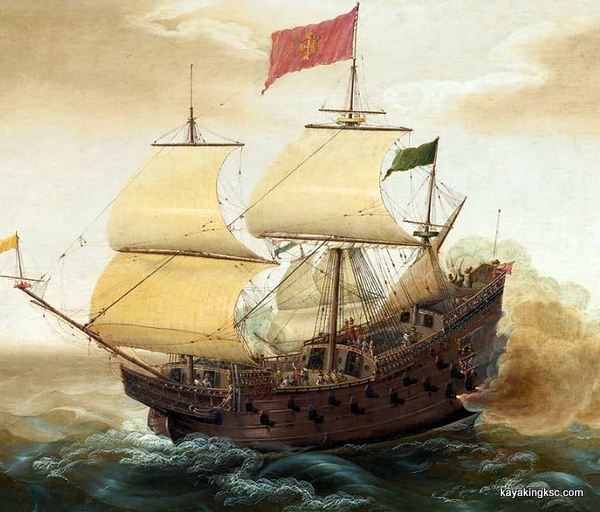
The carrack San Miguel de Archangel -the lighter vessel made it further north than the other treasure ships.
The Plate Fleet wreck & the missing Carrack.
The ship San Miguel de Archangel is the Holy Grail of treasure hunters. The most famous of all treasure wrecks yet to be discovered lies off the coast of Kennedy Space Center.
Hurricane season1715, the largest treasure fleet to be sunk by a hurricane is ground to pieces on the Florida coast. Ten of the twelve heavily laden ships are wrecked from Port St. Lucie to Melbourne Beach.
The two lightest ships run before the hurricane unaware of the fleet's demise and the French ship Griffon just escapes destruction.
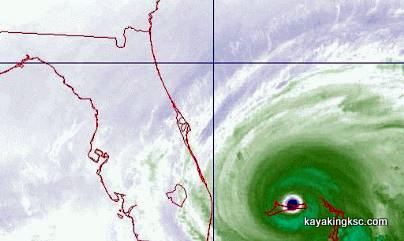
The eastward squalls thrown off by the hurricane grinds the treasure fleet upon the reefs and bars of Florida. One ship is actually pushed over the dune line into the Ais Lagoon (Indian River Lagoon)
A thousand sailors perish in the storm, however over eleven-hundred survive the fleet's destruction.
The Carrack San Miguel de Archangel lighter than the heavy galleons escapes the ravages of the storm, sailed by the best sailors on the planet outside of Polynesia: A mixed crew of the Empire of Spain, Iberians, Taino, Phoenician, Greek and Italians.
However the storm forces the San Miguel de Archangel into the giant breakers of the Canaveral Bulls and the San Miguel de Archangel disappears in the stormy Atlantic.
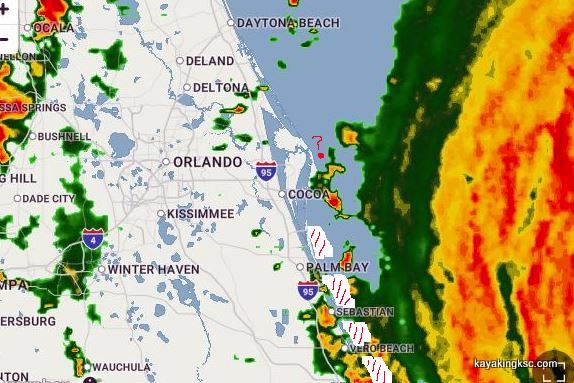
Known wreck sites (red-stripped areas) of the Plate Fleet superimposed on Hurricane Dorian ravaging the coastline. The fleeter San Miguel de Archangel would have been forced directly into the shoals of Cape Canaveral.
There are very few hints of the where the San Miguel de Archangel died.
Some gold coins discovered on Canaveral National Seashore and fair amount of gold buried in the shell middens of Banana Creek on Kennedy Space Center.
Few hints until the destruction of the Space Shuttle Challenger and the intense efforts to recover the shuttle debris. Recovery of the shuttle debris resulted in Intense scrutiny of the ocean floor off of Kennedy Space Center.
Challenger destruction video. Warning Graphic. This video was held tight by NASA for nearly 30 years. Skip to 34:30, shuttle debris falls into the ocean for over two minutes.
Space Shuttle debris on the NASA Beach?
Before the Shuttle fell into the sea east of the Canaveral Bulls there had been only selective and rather secretive inspection of this area off of Cape Canaveral.
There had been the occasional mammoth or mastodon bone dredged up by the shrimp boats running their nets in the ice age "paleo lagoons" There were recreational lobster divers and the occasional crazy surfer who tested the giant off shore waves.
When I was with the Pan Am Divers we "stored" seven miles of undersea armored communication cable on the ancient paleo lagoon near Chester Shoals. It is still there.....
However the lion share of the sea bed exploration was reserved by the salvage company that paid the state permit to search for & salvage treasure. The State of Florida strictly enforces their permits to destroy archaeology sites in the hope of a cut of the treasure.
This is especially true because the Spanish ship San Miguel de Archangel, The Holy Grail of treasure hunters has yet to be discovered and the space center is "just in the way" of the State recovering millions in diamonds, emeralds and worked gold. The lighter carrack could not carry the tons of gold and silver as did the galleons, consequently the San Miguel de Archangel carried the refined treasures of the new world.
The space shuttle sank beneath the waters off of the cape and suddenly this part of east Florida was subject to intense scrutiny & mapping of the ocean floor. The main cabin was eventually discovered and the bodies of the fallen astronauts recovered.
Other items were discovered, mapped, marked & photographed that bespoke of "Pre Space Program" tragedies. Wrecks of unknown origin as well aw ships identified as French, Spanish, American were discovered. However due to the nature of the treasure contract with the salvage company-they "owned everything discovered and yet to be discovered" the locations of ballast stone, timbers and iron cannons was kept by the divers and searchers contracted by NASA.
As a diver for the USAF I was working on Ascension Island when the Challenger fell into the ocean. However the undersea cable ship that was stationed at Port Canaveral was pressed into the shuttle recovery & salvage efforts.
Our next cable under the sea cable repair was on Antiqua and crew of the cable ship told an earful of stories about the discoveries-shuttle and Spanish. However there was a bitterness about their discoveries; because there was contract with the treasure salvage company.
As far as I am aware, the salvage company that discovered Jean Rebault's flagship off the coast of Cape Canaveral did so without any of the new knowledge learned from the retrieval of the Challenger Debris.
House of Refuge
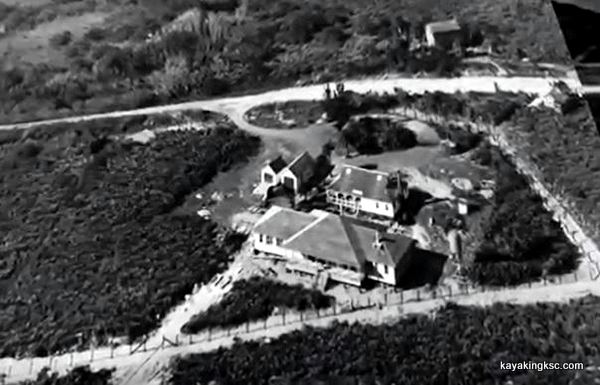
Welcome refuge for stranded mariners.
Chester Shoal House of Refuge (I prefer the easier "Chester Shoals Rescue House") was one of 11 rescue stations constructed along the coastal shore of East & West Florida -built specifically for shipwrecked sailors.
Of the eleven stations officially known as "Houses of Refuge in Florida" only one these rescue houses still remains standing (Hurricanes...)
"Gilbert's Bar House of Refuge" and is operated as a museum & is open to the public. -Well worth the drive to view some pre-space program old Florida.
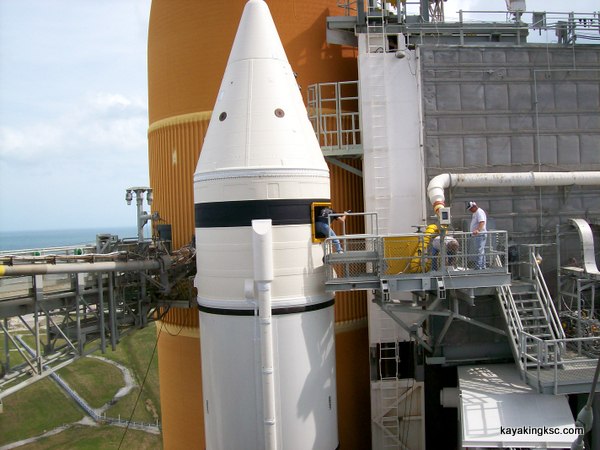
Shuttle tank and booster on launch pad 39A & in the distance, the ruins of Chester Shoals near the ocean.
Yes I have used this photo on another page because it is such a cool picture.
(photo credit: mine)
My first reading about shipwrecked sailors on the Cape and the Chester Shoal Rescue house was when working night shift for a space shuttle launch at Pad 39A.
--Recall the Space Shuttle Program lasted thirty years. During shuttle launch countdowns -it was not unusual for shuttle launches to be delayed up to five days resulting in seemingly endless all night shifts for the support teams. (And fantastic overtime pay!)
Consequently waiting out the countdowns, old & odd magazines were read, re-read & stacked in out of the way desk drawers & break rooms. (For those unaware: A "magazine" was entertainment prior to the age of cell phones)
"No I am not kidding about that" Just take my word for it.
--Sit down at a desk & open a drawer one would often be disappointed to find a five or six year old "well thumbed" & worn sports or fishing magazine. Sometimes I would score an ancient National Geo magazine and read until the dawn.
During one such launch delay; I took a break during our 12 hour shift and in the pile of old magazines was an odd "out of place" historical journal about the Indian River Lagoon & pre-developed beach area.
Of course the historical journal caught my eye and I scooped it up to read about a World War 2 German submarine sinking a cargo ship off of the cape and the sailors washing ashore near the Chester Shoal refuge house. The journal article also described how one of the shipwrecked sailors married the daughter of the person contracted to operate the House of Refuge.
I was surprised. I had no idea that there were submarine attacks this close to the east coast (but I am originally from the Midwest) and so most of Florida history including any of the rescue houses or German submarines was unexplored territory.
Location, location, location.......
At that time of first learning about the house of refuge, I did not really consider to look for the location the Chester Shoals refuge house because well, KSC, CCAFS and Canaveral National Seashore covers a huge stretch of beach that is 95% Off Limits to most everyone but park rangers counting sea turtle nests & eastern diamondback rattlesnakes.
However I did keep that historical journal. Have it in a box somewhere. And to be honest I did begin the search for the ruins.
You Tube!
Chester Shoals House of Refuge 1943 aerial photograph superimposed on Launch Pad 39A. Fascinating Youtube clip!
Wow, so using the Youtube photograph superimposed on a modern map I was able to investigate the ruins of the Rescue house AND the what remains of the Harvard Gun Club.
Not much remains of the Gun Club, or a least the area is just too overgrown to find much more, however at least one wall was discovered before the bugs ran me out.
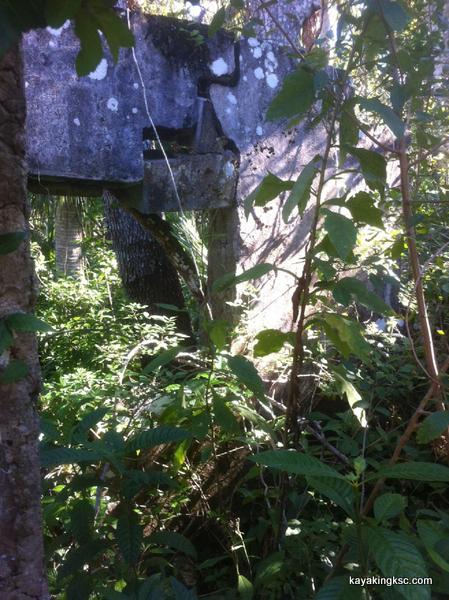
The Harvard Gun Club? A duck hunting club for the wealthy.
The Mosquito Lagoon & Indian River were at one time legendary for the flocks of winter water fowl. (Have money murder as many ducks as you sore shoulder could handle & no need to collect them....)
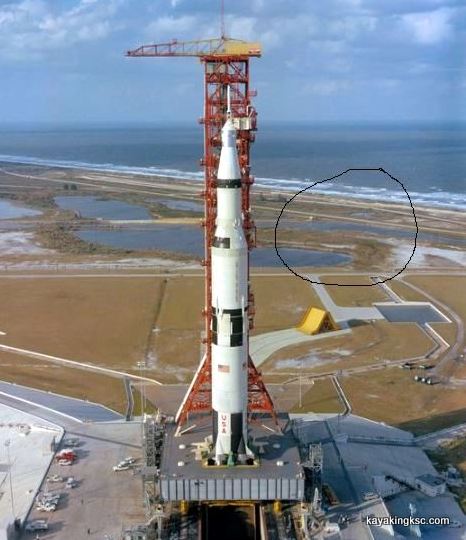
I used the 1948 picture and this 1968 picture of Pad A to confirm that a tiny portion of the Harvard Gun Club buildings still remained. (In the circle, the white scar is where the main buildings were bulldozed into the swamp)
In the following years as I read more about the history of that desolate beach, the "Canaveral Bulls", the Ais Indians, the Spanish explorations; the wrecked treasure fleet, my interest in the history of the land before the space center steadily grew.
As well as a burgeoning addiction to both surfing and wind surfing. The addiction that was carried into the Caribbean and the South Atlantic.
Monkey on my back...... History, surfing, fishing & board sailing.
Look at those waves! (The Canaveral Bulls)
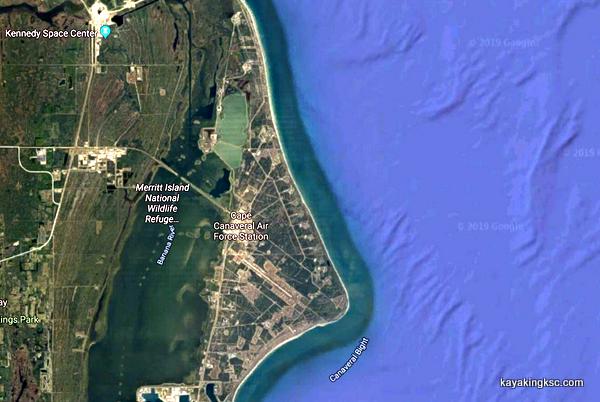
Why the huge off shore waves?
Look at the ocean floor off of KSC and Cape Canaveral Air Force Station. The ridges cause unexpectedly hug breakers--Miles away from the surf. (There is treasure ship in one of those ridges!)
Before I joined the USAF and was stationed to this mosquito coast I had never seen the ocean.
Consequently while stationed at CCAFS, a group of airmen and I would daily take trips to the off limit areas of the beach and watch the waves and storms. (Security overlooked our visits to the beach because we were active duty military & we might have been in training)
Also my interest in surfing steadily grew, as did the intense observation of the waves patterns (have to get through those waves on a surfboard)
Readily evident was that when storms hit KSC/CCAFS there suddenly appeared waves 12-20 feet in height and perhaps a mile off shore.
This was the famous ship killing "Canaveral Bulls" -I did not know of the existence of the shoals, but the waves could not be missed, could not be ignored! Rather suddenly huge very impressive waves appeared where none were before.
Other Mysteries of the cape....? (& KSC)
The B52 Bomber crash
Problem with being in the military and assigned to a new duty station is almost no one assigned with you is aware of the local history.
Certainly being assigned to CCAFS (Once known as Cape Kennedy) you could not escape the relics and ruins of the space race or the modern efforts to place both human and payloads into orbit.
We did actually train in the ruins of the launch pads.
Cape Canaveral Air Force Station is sprinkled with abandoned launch complexes and memorials to fallen astronauts
As young airmen stationed to Florida from all parts of the empire of the United States; the launch pads were a just a novelty not much different from the Ais Indian mounds which dot beach and rivers of CCAFS and the WWII bombing targets still standing in the rivers.
We were far more interested in feeding the giant space center alligators with road kill (we did not know it was against the law) and making fishing trips to the fresh water ponds of Kennedy Space Center (another fun item we did not realize was against he law)
We did not know of the 1968 bomber crash or Chester Shoals House of Refuge or even of the Spanish treasure fleet submerged along the Florida Coast and the under the Canaveral Bulls.
History almost lost or lost for a little while?
While in the USAF we used drive to the beach (another rule violation) our favorite road that accessed the was on the south end of CCAFS
Only a recent visit to the CCAFS space museum had I learned why that particular road to the beach had been constructed:
A USAF B52 bomber had crashed in that very site & a road had been constructed through the Florida scrub.
Yet Not one the two hundred members of our electronic installation squadron knew about the bomber crash.
History lost, found, lost again. Story of the cape.
Locations of Houses of Refuge in Florida
The houses of refuge on the east coast of Florida were (from north to south):
- Smith's Creek, 20 miles south of Matanzas Inlet, 29°26′10″N 81°06′25″W / 29.43611°N 81.10694°W / 29.43611; -81.10694
- Mosquito Lagoon, east of the Mosquito Lagoon, 28°51′30″N 80°46′20″W / 28.85833°N 80.77222°W / 28.85833; -80.77222
- Chester Shoal, 11 miles north of Cape Canaveral, 28°36′40″N 80°35′50″W / 28.61111°N 80.59722°W / 28.61111; -80.59722
- Cape Malabar, 30 miles south of Cape Canaveral, 28°03′10″N 80°32′45″W / 28.05278°N 80.54583°W / 28.05278; -80.54583
- Indian River or Bethel Creek, sixteen miles north of the Indian River Inlet (now known as the Fort Pierce Inlet), 27°40′00″N 80°21′20″W / 27.6666667°N 80.35556°W / 27.6666667; -80.35556
- Indian River Inlet, on the south side of the Indian River Inlet (now known as the Fort Pierce Inlet), 27°29′45″N 80°17′50″W / 27.49583°N 80.29722°W / 27.49583; -80.29722
- Gilbert's Bar or Saint Lucie Rocks, two miles north of what is now the St. Lucie Inlet, near Stuart, Florida, 27°12′00″N 80°09′50″W / 27.2°N 80.16389°W / 27.2; -80.16389
- Jupiter Inlet, near the Jupiter Inlet Lighthouse. This station was a Life Saving Station, rather than a House of Refuge, 26°55′40″N 80°04′00″W / 26.92778°N 80.0666667°W / 26.92778; -80.0666667
- Orange Grove,26°27′30″N 80°03′20″W / 26.45833°N 80.05556°W / 26.45833; -80.05556 in what is now Delray Beach, Florida
- Fort Lauderdale, in what is now Fort Lauderdale, Florida, 26°08′00″N 80°06′00″W / 26.1333333°N 80.1°W / 26.1333333; -80.1
- Biscayne or Indian Creek, at what is now 72nd Street on Miami Beach, Florida, 25°54′10″N 80°08′00″W / 25.90278°N 80.1333333°W / 25.90278; -80.1333333

Return Home from Chester Shoals Rescue House page

My next book!! "Surviving Kennedy Space Center"
on Amazon.
Peek behind the curtains of the Shuttle and Artemis programs.
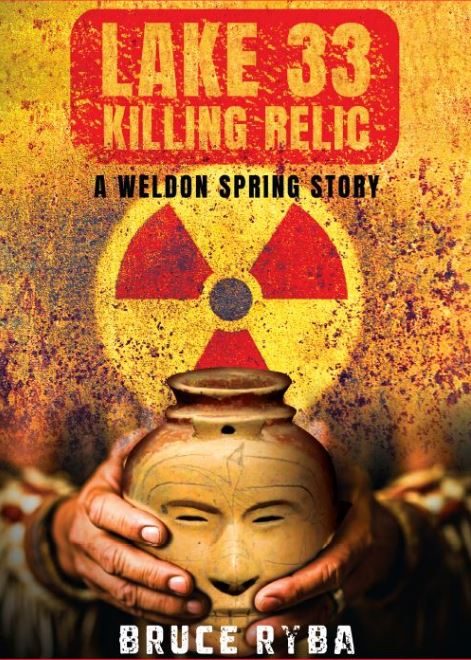
(Second to newest) My newest book, available on Amazon
(paperback and e-book)
For pet lovers around the globe, "It's a Matter of Luck" is a collection of heart warming stories of horse rescues from the slaughterhouse.
Available on Amazon

It's a Matter of Luck: Inspirational, Heartfelt Stories of Horses Given a Second Chance.
by Kim Ryba & Lina T. Lindgren
Warning: This book may cause your eyes to water in a good way. (speaking from experience after reading it)
Please give Kim and Lina a heartfelt review on Amazon!
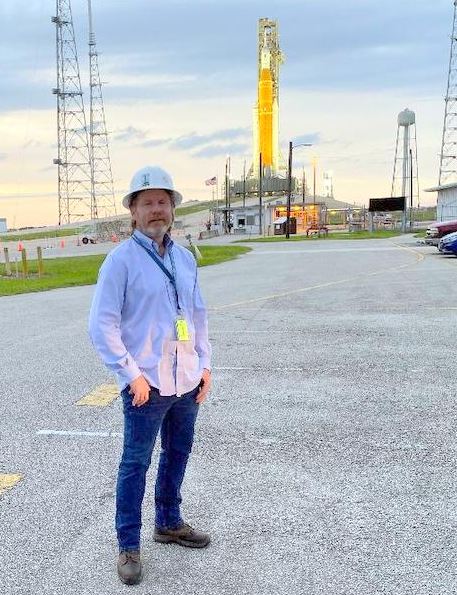
Author Bruce Ryba at Kennedy Space Center Launch Pad 39B & Artemis 1. "We are going to the Moon!"
Author's discussion (that's me) on You Tube of a book review on Amazon
For the video versions of information, please check out my YouTube Channel (Turkeys, Flintknapping, dive stories etc.)
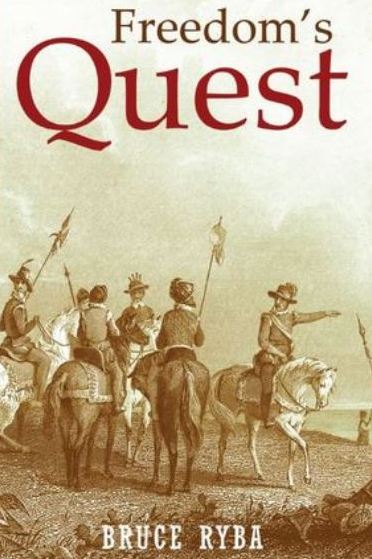
My fictional series/stories on Florida history:
Freedoms Quest (book one)
Struggle for the northern frontier and other lost tales of old Florida.
Available on Amazon

Desperate times call for bold action.
In a desperate move to retain Florida and protect the treasure-laden galleons on their dangerous return journey to Europe, the King of Spain issues a royal decree offering refuge to all English slaves who escape Florida and pick up a musket to defend the coquina walls of Saint Augustine.
In another bold gamble, the King offers refuge to the dissatisfied Indian nations of the southeast who will take up arms against the English.
Clans, traumatized by war and disease, cross the Spanish Frontier to settle the cattle-rich land and burned missions of Florida.
Follow the descendants of the conquistador Louis Castillo in remote Spanish Florida, a wild and swept by diseases, hurricanes, and northern invasions.
Book Two: End of Empire Available on Amazon!